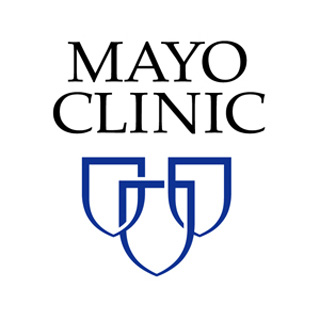Effect of Treatment on Activity and Muscle Function in Pediatric Patients With Scoliosis
| Status: | Enrolling by invitation |
|---|---|
| Conditions: | Orthopedic |
| Therapuetic Areas: | Orthopedics / Podiatry |
| Healthy: | No |
| Age Range: | 9 - 16 |
| Updated: | 10/20/2018 |
| Start Date: | November 2015 |
| End Date: | December 2019 |
Effect of Treatment on Activity and Muscle Function in Pediatric Patients With Scoliosis (SAMUS SCOLI)
This study will explore the relationship between skeletal muscle and physical activity in
scoliosis patients to provide insight into both the etiology of scoliosis and potential ways
to mitigate the potential harms of treatment.
scoliosis patients to provide insight into both the etiology of scoliosis and potential ways
to mitigate the potential harms of treatment.
The aims include first, to quantify the posture and physical activity of patients in the
community before and after scoliosis treatment and compare to age-matched controls. Patients
undergoing bracing or surgery for scoliosis will wear novel low-profile electronic monitors
for 4 days prior to and at one year after initiation of treatment. Accelerometer data from
the 4 activity monitors are combined for a comprehensive profile of daily activity, above and
beyond that of a typical pedometer. Analysis will show a participant's % active time vs.
static, % time sitting vs. lying down vs. standing vs. walking, total number of steps taken
per day, and cadence of walking during each activity bout. The amount of total daily time
spent lying, sitting, standing, walking and running will be quantified using specialized
processing algorithms developed at Mayo Clinic. Results will be compared to a group of age-
and BMI-matched control patients with healed forearm fractures.
Second, to determine changes in the mechanical properties of the paraspinal skeletal
musculature (muscles along the spine) in scoliosis patient before and after treatment with
brace or spinal surgery.
Shear Wave Elastography (SWUE) is a technique that uses ultrasound, a non-invasive imaging
technique, to detect mechanical properties of tissues. Using SWUE, the stiffness in the
paraspinal muscles will be obtained by acquiring Shear modulus measurements, reported in kilo
Pascal (kPa) units. 10 measurements will be obtained for each muscle and a region of interest
(ROI) will be placed in the displayed elastogram or color map from each measurement to obtain
a "kPa" value. A mean shear modulus or stiffness will be obtained by averaging all 10
results. The measurements from each ROI are derived using software built in the ultrasound
equipment.
The change in paraspinal skeletal muscle stiffness will be assessed and compared to normal
controls to determine characteristics of spinal musculature in scoliosis patients and the
impact of treatment with bracing or surgery.
community before and after scoliosis treatment and compare to age-matched controls. Patients
undergoing bracing or surgery for scoliosis will wear novel low-profile electronic monitors
for 4 days prior to and at one year after initiation of treatment. Accelerometer data from
the 4 activity monitors are combined for a comprehensive profile of daily activity, above and
beyond that of a typical pedometer. Analysis will show a participant's % active time vs.
static, % time sitting vs. lying down vs. standing vs. walking, total number of steps taken
per day, and cadence of walking during each activity bout. The amount of total daily time
spent lying, sitting, standing, walking and running will be quantified using specialized
processing algorithms developed at Mayo Clinic. Results will be compared to a group of age-
and BMI-matched control patients with healed forearm fractures.
Second, to determine changes in the mechanical properties of the paraspinal skeletal
musculature (muscles along the spine) in scoliosis patient before and after treatment with
brace or spinal surgery.
Shear Wave Elastography (SWUE) is a technique that uses ultrasound, a non-invasive imaging
technique, to detect mechanical properties of tissues. Using SWUE, the stiffness in the
paraspinal muscles will be obtained by acquiring Shear modulus measurements, reported in kilo
Pascal (kPa) units. 10 measurements will be obtained for each muscle and a region of interest
(ROI) will be placed in the displayed elastogram or color map from each measurement to obtain
a "kPa" value. A mean shear modulus or stiffness will be obtained by averaging all 10
results. The measurements from each ROI are derived using software built in the ultrasound
equipment.
The change in paraspinal skeletal muscle stiffness will be assessed and compared to normal
controls to determine characteristics of spinal musculature in scoliosis patients and the
impact of treatment with bracing or surgery.
Three groups will be recruited from patients seen at the Mayo Clinic pediatric orthopedic
clinic located in Rochester, Minnesota. Three groups with 12 patients in each group for a
total of 36 patients, to allow for drop-outs and testing of statistical significance
between the three cohorts (Brace, Surgery and Control groups).
Inclusion Criteria:
- Males and females between 9 to16 years of age
- Scoliosis/Surgery group; has severe scoliosis curves requiring posterior spinal fusion
surgery
- Scoliosis/Brace group; has scoliosis curves requiring brace treatment for at least the
next year
- The Control group will be aged matched participants who have healed forearm fractures
and will be matched to case patients by age, gender, and Body Mass Index (BMI). These
children will be considered normal subjects for both the accelerometers and the Shear
Wave Elastography (SWUE)
Exclusion Criteria:
- Patients with underlying muscle conditions or neuromuscular scoliosis
We found this trial at
1
site
200 First Street SW
Rochester, Minnesota 55905
Rochester, Minnesota 55905
507-284-2511

Phone: 507-538-3561
Mayo Clinic Rochester Mayo Clinic is a nonprofit worldwide leader in medical care, research and...
Click here to add this to my saved trials